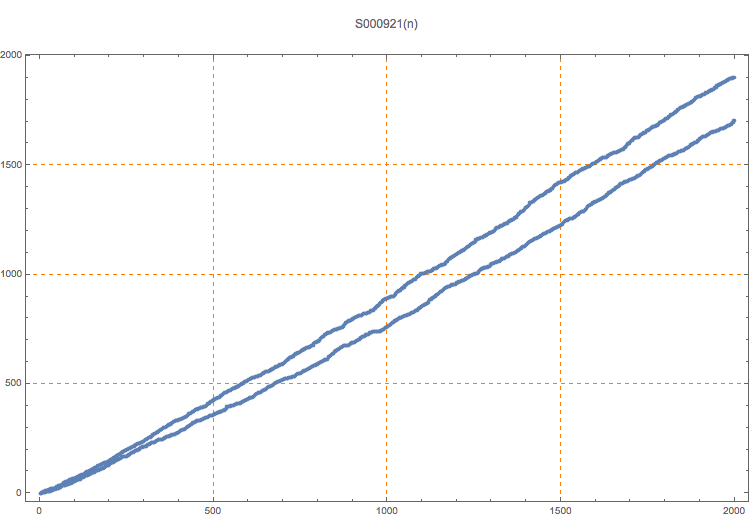Starting with the complex prime 1+I, the nearest complex prime x + y*I greater than the previous prime.
1, 1, 2, 1, 3, 2, 5, 2, 7, 2, 8, 3, 9, 4, 11, 4, 11, 6, 12, 7, 13, 8, 14, 9, 16, 9, 17, 10, 19, 10, 20, 11, 20, 13, 22, 13, 22, 15, 22, 17, 23, 18, 24, 19, 26, 21, 27, 22, 30, 23, 32, 23, 35, 24, 35, 26, 37, 28, 37, 30, 37, 32, 39, 34, 41, 34, 45, 34, 48, 35
1
By “greater” we mean that both parts, x and y, are greater or equal to the parts of the previous number.
T. D. Noe, Plot of 1000 pairs
T. D. Noe, Table of 1000 pairs
Eric W. Weisstein, MathWorld: Gaussian Prime
(Mma) nn = 10; pts = 1000; d = Sort[Select[Flatten[Table[{Sqrt[i^2 + j^2], i, j}, {i, 0, nn}, {j, 0, nn}], 1], #[[1]] <= nn &], #1[[1]] < #2[[1]] &]; p = 1 + I; t = {p}; Do[i = 2; While[i <= Length[d] && ! PrimeQ[p + d[[i, 2]] + I*d[[i, 3]], GaussianIntegers -> True], i++]; If[i >= Length[d], Return[], p = p + d[[i, 2]] + I*d[[i, 3]]; AppendTo[t, p]], {pts - 1}]; Flatten[Transpose[{Re[t], Im[t]}]]
nonn
T. D. Noe, Jul 19 2016
